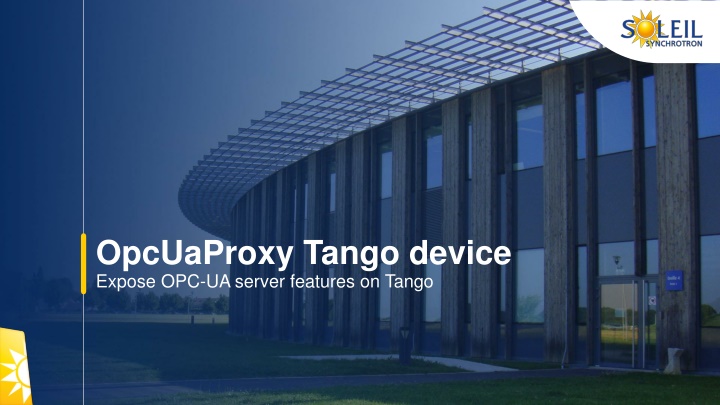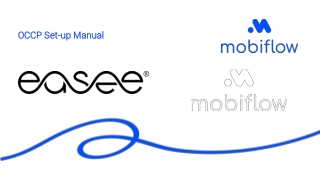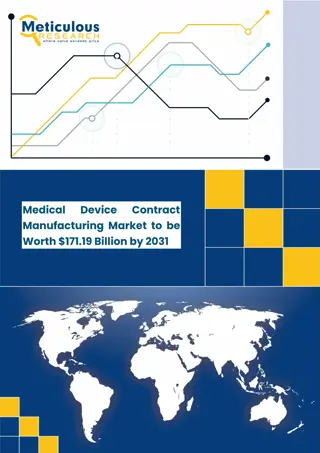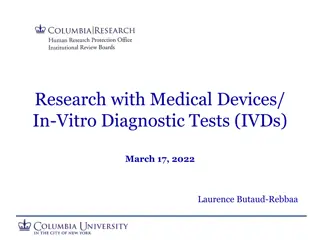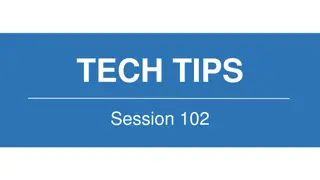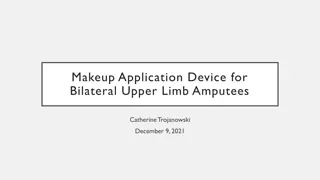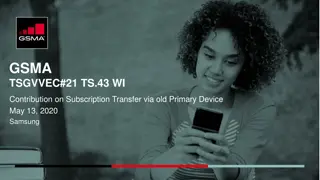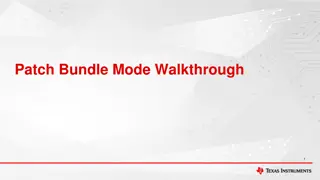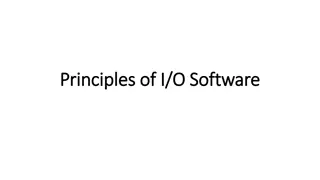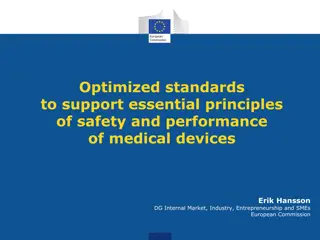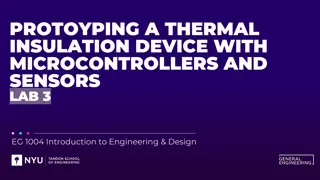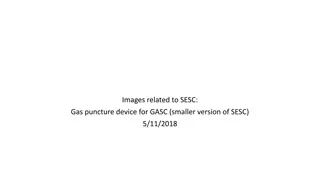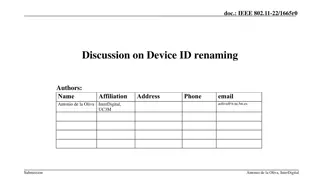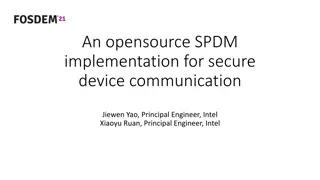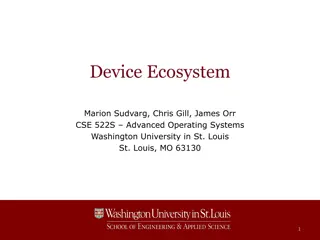OpcUaProxy Tango device
In the provided content snippet, it appears to discuss the integration of an OPC-UA server feature with a Tango device. The focus seems to be on exposing and utilizing such features within the Tango device environment. This integration can enable communication and interoperability between the Tango device and other systems or devices that support OPC-UA protocols, potentially enhancing the device's capabilities and connectivity.
Download Presentation

Please find below an Image/Link to download the presentation.
The content on the website is provided AS IS for your information and personal use only. It may not be sold, licensed, or shared on other websites without obtaining consent from the author.If you encounter any issues during the download, it is possible that the publisher has removed the file from their server.
You are allowed to download the files provided on this website for personal or commercial use, subject to the condition that they are used lawfully. All files are the property of their respective owners.
The content on the website is provided AS IS for your information and personal use only. It may not be sold, licensed, or shared on other websites without obtaining consent from the author.
E N D
Presentation Transcript
OpcUaProxy Tango device Expose OPC-UA server features on Tango
Outline Objectives Architecture Main elements Device and device server, sessions, and OPC-UA Variables and nodes OPC-UA Types, events, OPC-UA methods State and Status Choices and limitations Auto-discovery, type conversion Performances Use cases Possible evolutions State and Status, management of complex types OpcUaProxy Tango device 2
Objectives Which goals are achieved?
Objectives Establish a standardized communication with the Tango ecosystem and equipment, systems or applications using the OPC-UA protocol Manage events, subscription system, and sessions Manage OPC-UA types and their conversion to Tango Make the specifics OPC-UA protocol invisible once the device is deployed Fully represent a system or a subset of a system and view it as an equipment Allow exploration of the OPC-UA server and discover server capabilities with minimal prior configuration (just its address) BrowseNode, ReadNode, Enable auto-discovery No need to specify the entirety of an element. Its structure can be automatically deduced with simple rules (type, dimension, underlying elements, ) Make OPC-UA a standard protocol at SOLEIL OpcUaProxy Tango device 4
Architecture The basics DeviceServer named OpcUaProxy 2 Classes OpcUaConnector OpcUaSubscriber Developed in Java with the Eclipse Milo library At a minimum, just one OpcUaConnector device may be enough to use an OPC-UA server through Tango OpcUaProxy Tango device 6
Architecture 1 DeviceServer = 1 OPC-UA Session, N Subscriptions OpcUaConnector Manages the connection with the OPC-UA server Manages the session Manages requests not related to a subscription Read a specific node, browse all structure, manage methods Unique within the DeviceServer and mandatory Can display variables related to the session as read-only attributes Secure connection based on certificates OpcUaSubscriber Use the OpcUaConnector device within the DeviceServer Manages subscriptions (Publishing interval, subscribed items) Expose OPC-UA variables as TANGO attributes Generates Tango events OpcUaProxy Tango device 7
Architecture A simple sequence OpcUaProxy Tango device 8
Architecture The device OpcUaSubscriber subscribes to OPC-UA nodes of type "Variable" It is possible to specify the sampling interval for each variable and the publication interval for each subscription Values of OPC-UA variables are stored upon receiving OPC-UA events At-source timestamping On-change data exchange Capability to generate Tango events upon receiving OPC-UA events change, archive, user_event, data_ready The device OpcUaConnector maps OPC-UA methods Only with native types I/O OpcUaProxy Tango device 9
Architecture Management of OPC-UA types and conversion to Tango Native types: direct 1-to-1 conversion possible Multidimensional types: No handling of dimensions > 2, otherwise 1-to-1 if the type is native Complex types (structures): a value update is performed just before writing Possibility to subscribe to all "Variable" nodes located under any node, either in read-only or read-write mode Unstacking of structures and hierarchy into attributes No equivalent in Tango Replaced by a naming rule: base name + "." + tree path with "." as separator Base name = Tango attribute name Necessary to use optimized OPC-UA structure OpcUaProxy Tango device 10
Architecture Devices states au status OpcUaConnector The "state" denotes the state of the connection: INIT, ON, or FAULT. The "status" provides connection information. It transmits the state to OpcUaSubscriber devices OpcUaSubscriber Currently, it mirrors the state of the OpcUaConnector OpcUaProxy Tango device 11
Choices and limitations Limited auto-discovery The absence of equivalence to the hierarchical structure in OPC-UA within Tango restricts its usage when flattening Naming convention is not very descriptive and not very customizable Type conversion Difficult management of OPC-UA structures, currently handled at the attribute level as a hierarchy while benefiting from the structure mechanism in communication No handling of matrices with dimensions > 2, a limitation in Tango. OpcUaProxy Tango device 13
Perfomances 4 Device server 1 OpcUaSubscriber with 990 attributes each (3960 total) 2,87% cpu usage 14,5Go RAM total Load balancing tests The transmission of 3000 data was successfully tested on a Siemens PLC with the transmission interval set to 1000ms. However, the method for selecting the best number of connectors and subscribers according to the capabilities of the OPC-UA server has yet to be found. The results were convincing enough to choose the device for the cooling station (HVAC) supervision OpcUaProxy Tango device 15
Use cases Which systems are using it at SOLEIL?
Use cases Communication with MicroTCA platform for the slow control of the Fast Orbit FeedBack PANORAMA Supervision of the cooling station (HVAC) SIEMENS S7-1xxx series PLCs Site stability and vibration monitoring system OpcUaProxy Tango device 17
Possible evolutions State and status OpcUaConnector Providing specific connection information: requires digging into the data returned by session tree exploration OpcUaSubscriber Define several variables to display as a status Use a variable as a state result Complex types The challenge of passing complex variables in I/O needs to be solved, likely through Json Tango DevEncoded could be a solution Developing specialized devices based on this one, through inheritance, for very specific needs Security improvements (certificates) OpcUaProxy Tango device 19
Fell free to use it! Available on Soleil s GitLab https://gitlab.synchrotron-soleil.fr/software-control-system/tango- devices/communication/opcuaproxy OpcUaProxy Tango device 20
Thats all THANKS! Guillaume PICHON guillaume.pichon@synchrotron-soleil.fr OpcUaProxy Tango device 21
